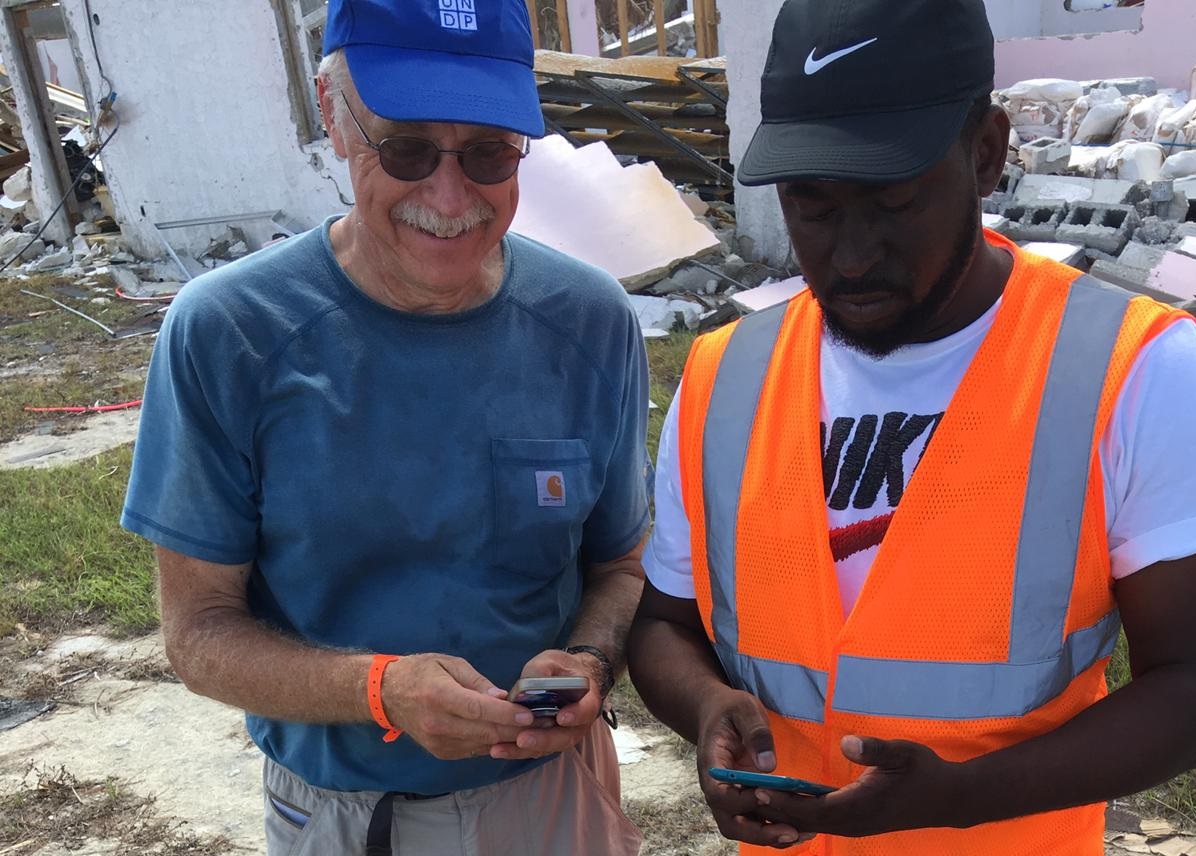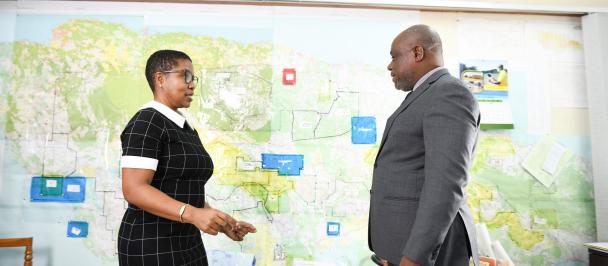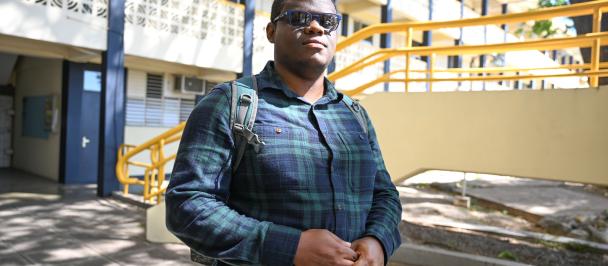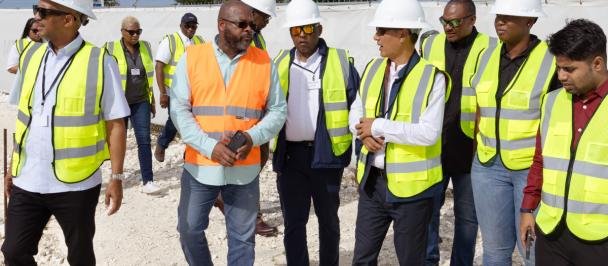Team member from UNDP partner, Engineers Without Borders works with a Building Inspector from Bahamas on the BDA tool in Grand Bahama.
NASSAU, The Bahamas - The National Emergency Management Agency (NEMA) and the Ministry of Public Works (MOPW), supported by the United Nations Development Programme (UNDP), have adopted the use of an innovative new technology to conduct building damage assessments across the islands affected by Hurricane Dorian.
“In the past, data collection was a tedious process; information was collected on paper and then transferred to Excel. Now, this innovative way of data collection produces real-time interactive reports for rapid assessments,” said Gayle Outten-Moncur, Manager of NEMA’s National Emergency Operations Centre (NEOC).
Francis Clarke, Senior Engineer with the Ministry of Public Works (MOPW) said the Building Damage Assessment (BDA) Toolkit designed by UNDP, is currently being used by technical staff at the MOPW to quickly assess damaged conditions of private residences, public buildings and non-residential buildings affected by Hurricane Dorian.
To date, approximately 3,000 houses in Grand Bahama and Abaco have been assessed using the online tool. The valuable data collected in the field has been informing the Government on how to proceed with the recovery process. Further, it will assist the Government in cost estimations of damages and for planning new and more resilient public policies to build back better.
Since 2017, UNDP has been supporting other Caribbean countries in the aftermath of natural hazards using the BDA Toolkit. This methodology was already implemented in Barbuda and Dominica following Hurricanes Irma and Maria, respectively. This revolutionary tool facilitates rapid assessment using an online questionnaire on mobile devices that provide real-time geo-referenced reports. Prior to the use of the BDA methodology, building damage assessments were paper-based processes that could take months, even years, for data to be collected and processed to be used by policy-makers.
“The BDA toolkit will also inform the prioritization for risk-informed rehabilitation and re-building, assist the Government on the quantification of damage, prioritize for faster recovery, monitoring and can also help with policy making for disaster preparedness,” said Mr. Clarke.
“The tool has been useful, since it allows users to upload the information straight away. Report can be generated in real-time for review and analysis,” said Mr. Clarke.
Areas assessed to date include:
- Grand Bahama with more than 2,500 buildings assessed (East Grand Bahama, West, Grand Bahama, Central Grand Bahama)
- Great Abaco with more than 400 buildings assessed (Spring City, Central Pines)
For more information contact: Lindsay Thompson, Public Information Officer
Email: lindsaythompson@bahamas.gov.bs or NEMA@bahamas.gov.bs or nemabahamas242@gmail.com
Website: www.bahamas.gov.bs/nema/dailyupdates
Contacts: 242-322-6081/5 or 242-361-5569 or 242-376-2042
ABOUT NEMA:
The National Emergency Management Agency (NEMA) is a Bahamas Government agency, which operates under the authority of The Cabinet Office.
Vision: An organization that anticipates the potential negative impacts of disasters and emergency situations and develops effective and efficient plans, procedures and systems to minimize such impacts, by relying on sound principles of disaster management, community participation and inter-agency collaboration.
Mission: To reduce the loss of life and property within the Commonwealth of The Bahamas, by ensuring that adequate preparedness and mitigation measures, and response and recovery mechanisms are established to counteract the impact of natural, man- made and technological hazards.

 Locations
Locations




